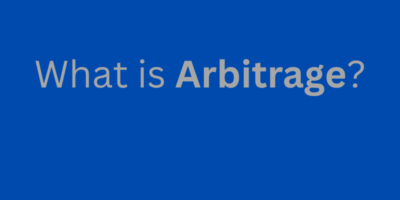What is an Option?

What is an Option? In finance, an option is a contract between two parties that gives the buyer (holder) the right, but not the obligation, to buy or sell an underlying asset at a specified price (strike price) on or before a specified date (expiration date).
History of Options
Options have a long and complex history that dates back to ancient times. The first known options trading dates back to ancient Greece, where farmers would use contracts to lock in the price of their crops before the harvest.
In the 17th century,
The first official options trading took place in Amsterdam, where the Dutch East India Company issued the first options contract. These early options contracts were used primarily for speculative purposes, and their use spread throughout Europe.
In the 18th century,
Options trading began in the United States when the Philadelphia Stock Exchange was founded. However, it was not until the 20th century that options trading became more widely used.
During the 1960s,
The Chicago Board Options Exchange (CBOE) was founded, becoming the first options exchange in the United States. The CBOE standardized options contracts, making options trading more accessible to individual investors.
In the 1970s,
The Black-Scholes model was developed, which provided a mathematical framework for pricing options contracts based on factors such as the current market price of the underlying asset, the strike price, the time to expiration, and the expected volatility of the underlying asset.
Since then,
Options trading has grown in popularity, with options contracts now available on a wide range of underlying assets, including stocks, indexes, commodities, and currencies.
Today,
Options trading is a complex and sophisticated financial instrument used by investors and traders worldwide for hedging, speculation, income generation, and risk management.
What Are the Two Types of Options?
The two main types of options are call options and put options.
Call options
A call option gives the buyer (holder) the right, but not the obligation, to buy the underlying asset at a specified price (strike price) on or before a specified date (expiration date). Call options are typically used by investors who believe that the price of the underlying asset will increase in the future. If the price of the underlying asset is higher than the strike price, the holder can exercise the option and buy the asset at the lower strike price, then sell it at the higher market price to make a profit.
Put options
A put option gives the buyer (holder) the right, but not the obligation, to sell the underlying asset at a specified price (strike price) on or before a specified date (expiration date). Put options are typically used by investors who believe that the price of the underlying asset will decrease in the future. If the price of the underlying asset is lower than the strike price, the holder can exercise the option and sell the asset at the higher strike price, then buy it back at the lower market price to make a profit.
Both call and put options are contracts between a buyer (holder) and a seller (writer), and the holder pays a premium to the writer for the right to exercise the option. The price of the premium depends on various factors such as the current market price of the underlying asset, the strike price, and the option’s expiration date.
How Do Options Work?
Let’s take a call option as an example. If you buy a call option, you are paying for the right to buy the underlying asset at a specified price (strike price) on or before a specific date (expiration date). The seller (writer) of the option is obligated to sell you the underlying asset if you choose to exercise the option.
If the price of the underlying asset increases above the strike price, you can exercise your option and buy the asset at the lower strike price. You can then sell the asset at a higher market price to make a profit.
On the other hand, if the underlying asset’s price remains below the strike price, you are not obligated to exercise the option, and it may be more cost-effective to simply buy the asset on the open market.
In exchange for the right to buy the underlying asset at the specified price, the buyer pays a premium to the seller. The premium depends on the current market price of the underlying asset, the strike price, and the expiration date of the option.
Benefits of Trading Options
There are several benefits of trading options, that investors should consider before engaging in options trading. Below is a list of some of those benefits:
Limited risk
One of the biggest advantages of options trading is that the risk is limited to the premium paid for the option. This means that investors can benefit from the leverage of options trading without risking more than they are willing to lose.
Flexibility
Options contracts can be used to create a wide range of trading strategies, including hedging, income generation, and speculation. This flexibility makes options a versatile tool for traders.
High potential returns
Options trading can offer high potential returns, especially when compared to other financial instruments. This is due to the leverage provided by options trading, which allows traders to control a large amount of underlying assets with a relatively small amount of capital.
Diversification
Options trading can be used to diversify a portfolio, spreading out risk exposure and reducing overall portfolio risk.
Risks of Options Trading
Trading options involve several risks that investors should be aware of. Below is a list of some of those risks:
Complex
Options trading can be complex, and investors need to have a good understanding of the mechanics of options trading before engaging in this activity. This can make options trading more challenging than other financial instruments.
Time decay
Options contracts have a limited lifespan, and as they approach expiration, their value decreases. This means that investors need to be aware of the time decay and adjust their trading strategies accordingly.
Limited liquidity
Depending on the underlying asset, options trading may be less liquid than other financial instruments. This can make it difficult to enter and exit trades at the desired price.
Potential for loss
While options trading offers limited risk, there is still the potential for investors to lose money. This risk is especially significant when trading options with a short time to expiration or when engaging in more complex trading strategies.
Conclusion
Overall, options trading can be a powerful tool for investors looking to gain exposure to a wide range of assets, manage their risk, and generate income. However, it is important to fully understand the risks involved in options trading and seek professional advice before engaging in options trading. It is advisable to consult with a financial advisor and conduct thorough research before investing in any options.


